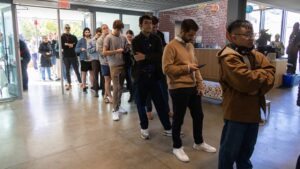Understanding the Gender Divide: Economic Factors Influencing the 2024 Election
As we approach a pivotal moment in U.S. history, the 2024 presidential election serves not only as a test of candidates but also as a mirror reflecting the economic and social divides within our society. At Extreme Investor Network, we believe that examining these divides offers essential insights into how economic factors shape voter behavior and opinions—and ultimately influence your financial future.
The Gender Gap in Voting: A Statistical Snapshot
Given the heightened emotions and stark political divides in the lead-up to the 2024 election, one of the most significant indicators of voter sentiment was, unsurprisingly, gender. Polling data from NBC News revealed a profound split, as women leaned toward Democratic nominee Vice President Kamala Harris—favoring her by an 8-point margin—whereas men showed significant support for Republican nominee and former President Donald Trump, backing him by a 13-point margin. This resulted in a striking 21-point gender divide: 53% of women supported Harris, compared to 45% for Trump, while 55% of men favored Trump against Harris’s 42%.
Economic Concerns: A Driving Force for Young Men
This election’s unique dynamic can be attributed significantly to economic frustration, particularly among younger men. Many voters cited inflation and the state of the economy as their primary concerns—issues that resonated deeply with Trump’s platform. Economic despair is not just a statistic; it reflects a broader sentiment among young men who feel as though viable pathways to financial stability and upward mobility are closing.
Julia Pollak, chief economist at ZipRecruiter, asserts that many men perceive a lack of economic opportunities, especially in former manufacturing states. “Men feel like there’s no pathway for economic mobility for them,” she notes. This perspective greatly influenced voter turnout and eventually Trump’s success at the polls.
The Masculine Exodus from the Workforce
Labor Participation Rates
The workforce landscape is shifting, with alarming trends showing that men aged 25 to 54—their prime working years—are leaving the labor market in increasing numbers. Pew Research highlights a particularly concerning phenomenon: men lacking a college education are exiting the workforce at higher rates than their educated counterparts.
While historical educational attainment rates for men and women were nearly equal, current statistics paint a different picture: as of today, 47% of women aged 25-34 hold a bachelor’s degree, compared to just 37% of men. This disparity contributes to a tightening job market where opportunities for non-college educated men are dwindling due to automation and globalization impacting traditional labor markets.
The NEET Crisis
Emerging as a critical social issue is the rise of NEETs—young individuals Not in Employment, Education, or Training. Richard Fry, a senior researcher at Pew, characterizes this cohort as being hardest hit by economic shifts. The message is clear: when individuals feel unrecognized and unrewarded in the labor market, their motivation to engage in work diminishes significantly.
The Impact of Educational Attainment on Financial Futures
A recent survey conducted by the National Endowment for Financial Education (NEFE) revealed that men were more likely than women to believe that the election results would significantly impact their financial lives in the short term—a statement echoed by many of their less educated peers. Those with less than a high school diploma or only a two-year degree were particularly concerned about how the election would affect their financial prospects.
Billy Hensley, president and CEO of NEFE, recognizes that “many Americans were weighing their current financial well-being and prospects for the future while casting their votes.” Indeed, the economic ramifications of political decisions are inseparable from individual financial health.
Women: Advancements and Challenges in the Workforce
On the flip side, women have made substantial strides in their education and workforce participation. As highlighted by economist Ali Bustamante, today’s women are often prioritizing their careers over traditional roles of motherhood and domesticity, thus reshaping the social fabric. Despite their increased representation in the workforce, issues such as paid leave, affordable child care, and income equality remain pressing concerns.
While women rallied around crucial issues like reproductive rights during the campaign, data shows these topics did not translate into increased voter turnout. Fatima Goss Graves of the National Women’s Law Center emphasizes that “the pain that people in this country has been feeling in terms of the economy is real," indicating that economic concerns transcend gender lines.
Conclusion: The Path Forward
As we reflect on the implications of the 2024 election, it’s clear that economic factors profoundly shape the political landscape. As an investor or concerned citizen, understanding these dynamics can help you navigate the complexities of financial decision-making in a rapidly changing environment.
At Extreme Investor Network, we aim to empower our readers with insights to help them understand how economic conditions and political realities can influence their financial futures. Remember that knowledgeable investing includes awareness of societal trends, so stay informed, stay engaged, and keep investing in your financial education. By understanding the nuances behind these trends, you can better position yourself for success, no matter which direction the political and economic winds may blow.

